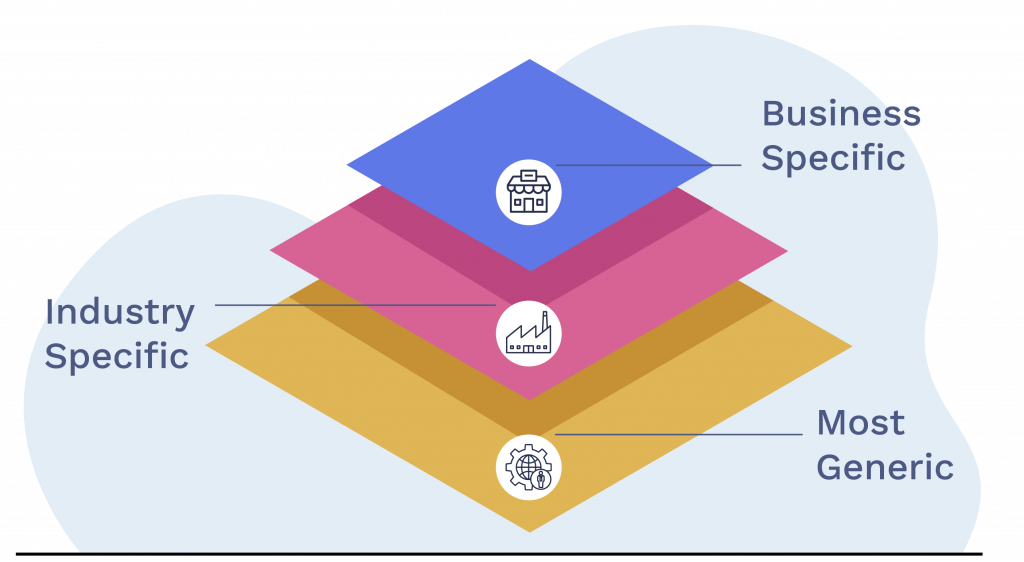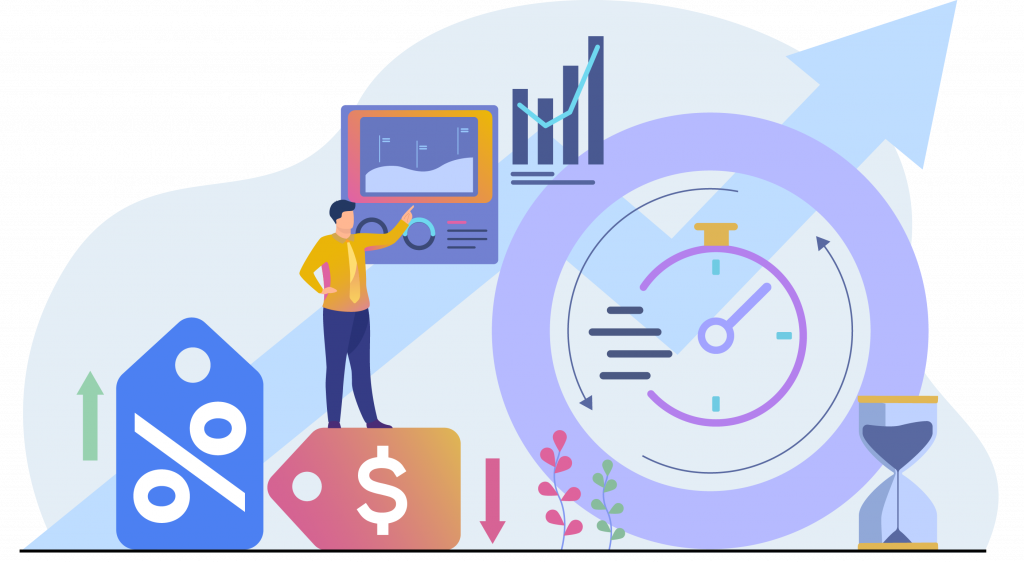AI Adoption in Consumer Commerce: A Strategic View
AI Adoption in Consumer Commerce: A Strategic View
Are consumer-facing businesses ready to embrace Enterprise AI?
Some leaders are already moving ahead, but many others are still studying the strategic justification for moving beyond BI reporting systems to implement Artificial Intelligence. While the benefits can be profound, the commitment is significant too.
In a fast-evolving business environment, strategic objectives need to be paired with the ability to make more frequent, more responsive, and more accurate, business decisions.
According to Rama Rao, Ph.D., co-founder of Hypersonix and its Head of Product Data, Enterprise AI leads to better and faster decision making and the capability to make more frequent responses to fast-changing conditions. These capabilities bring strategic advantages as well.

“That is a kind of approach our technology is now allowing,” says Dr. Rao. “Obtain a recommendation. Put it into action. See the feedback and resultant change. Then iterate. See how it worked in some of your market segments versus others. Then, amplify what you are doing in one place and change your strategy in another place.”
In this final part of our three-part interview feature, Dr. Rao shares his observations about an AI-enhanced future from the strategic perspective.
Read Part 1 and Part 2 of this interview series.
Hypersonix Strategic View
Q. We’ve previously covered how AI can be transformative for the shopper experience and in the management suite. Could we turn the conversation toward the Hypersonix view of AI in consumer commerce?
Dr. Rama Rao: For us, consumer commerce is full spectrum. That means a full spectrum of verticals that include, quick-serve and chain restaurants, hospitality, omnichannel retail, grocery, drug, healthcare, CPG brands, supply chain. This also includes financial services.
That is how we looked at the opportunity from the beginning. Our approach has been very much vertical-specific, but the underlying platform is constructed so we can rapidly expand across multiple verticals very quickly.
In our journey over the last three quarters we have moved quickly, beginning with restaurant operators. Then we have had successes in hospitality. Then grocery. Then drug stores and convenience stores. We are pursuing conversations with CPG and pharmaceuticals now.
Q. Would you explain further how this strategic approach is built into the platform?
Rao: There are three layers to this. At the most foundational level you could ask, “What is most generic for consumer commerce across all verticals? What is that foundation from a data and intelligence and solution point of view?”
Vertical-specific applications are built upon that. That’s the way we can configure it to make a generalized approach more industry-specific – for grocery, hospitality, restaurants, etc.

The third level is specific to a particular business. So, if you are in drug stores – a Walgreens and a CVS both have different ways in which they are looking at running their pharmacy businesses.
It is those three layers that we have sought to bring our solution to bear. We benefit from the fact that there is a core component that is very much more generic, but we can quickly configure to the vertical and down to the specific company and across verticals.
That has allowed us to be specific and general at the same time.
Q. Hypersonix has roots in tech first. Is it a challenge to communicate the advantages to consumer-facing channels?
Rao: Right from the early days when we started engaging with prospects, we approached it as a co-innovation activity. That means identifying the pain points that you are trying to solve and working with the customer on how to approach the solution. That has let us build solutions from the ground up, using advanced AI technology and leveraging cloud computing.
All of that comes to absolutely nothing if the customer cannot quickly realize the value. Consumer-facing companies are extremely pragmatic. In fact, the industries that we went after – food services, hospitality, omnichannel retail, CPG – a lot of them first start from the problem statement. They are very focused and hunting for solutions. They are working on razor thin margins. They certainly do not have the luxury to say, “I’m going to invest in technology for the technology’s sake.”
You could say we grew up in an environment and in industries where we must first talk about the value we are going to deliver. Then about how we are going actually save them money, or save them time or grow their revenues. If not, we lose the opportunity to have any further conversation.
That has been a key learning. We get to talk to a customer because the things we do directly add value. Furthermore, it is enabled by what we are developing on the bleeding edge. So it is future-proofing them – insulating them from having to rethink whether this choice is going to take them into the future.
Q. So, lead with the benefit, right? Is this intended to demonstrate that you understand what is meaningful to companies?
Rao: Exactly. Consider one of our larger e-commerce clients, who is extremely pragmatic and unimpressed by cool tech. How did we win the project? We were able to present an extremely tangible benefit for their supply chain organization and for their own-label products covering the full manufacturing cycle.
They could really see what they would save in terms of people and platform. We showed we could help them manage their supply chain and enable speed to answers with fewer data scientists.
Once their eyes opened to that value, they said “Yes, we are interested.”
Q. Mid-size companies are looking up at the market leaders and they worry about keeping pace with their customer experience offerings. Does Enterprise AI fit those users too?
Rao: Mid-sized entities also need the capabilities to compete. They are fighting over the same customers with others who may be much larger – even ten times larger. But they have a finite set of resources. In most cases, their investments in IT and data are limited. They may not even have an extensive data team. If you think about the value they can get from our solution, it is much, much stronger.
One of the elements of value is to get customers up and running very fast. In weeks, not quarters. Also we can’t demand a great deal of time and effort from the IT organization, which in general are very strained for time and resources.

So, we take on much of the heavy lifting. We have already done a significant level of customization and automation work in app development. Much of that is re-usable, so we can come in with low resource commitment on the customer side and get things up and running.
The same benefits I mentioned earlier apply to mid-sized firms as well. Fast time to value. Limited effort from IT. The overall business impact is something we can prove and show.
This way the decision becomes a lot simpler for consumer commerce clients. They cannot afford to wait a long time for solutions. They will not consider vanity solutions – technology for technology’s sake. We address all those questions.
Consequently, we are rapidly growing, with an extremely solid presence in the mid-market tier. We remain relevant for larger enterprises. And we have national scale customers where we address functional areas with the organization which operate independently. They see significant value in a Hypersonix solution too.
Q. These days a great deal of shopper behavior data originates from beyond the retail environment – like syndicated, competitor data, social content and sentiment. How does Hypersonix fold that in to enable decision processes?
Rao: The platform will access third-party data that originates outside the company. That includes everything related to the competitive landscape, including competitive intelligence on pricing. We support and add all of these into the equation.
One example of an external data source is weather, where there are a certain set of customer behaviors you may expect. Quick serve restaurants are a good example. Grocery purchases may also be highly influenced by weather patterns. A key question is, in which categories are shoppers likely to purchase more, or less?
Then, it changes by geography even within the same enterprise. You have some perception and reaction which then affects different demographics.
We have seen with some of our customers, instances where the same promotion caused customers in two regions to respond quite differently. It goes back to underlying customer demographics and other influences in these regions.
Q. It seems this is a perfect place to apply a relentless artificial intelligence to help with localized, granular planning.
Rao: That is actually an important way to think about this whole process. Imagine if you had the ability to make a set of decisions, but it costs you so much time and energy to make that you only did it a few times year.
A good example of this is price optimization. Unless a retailer has an in-house team capable of running a bespoke pricing solution, or one that they license, they typically engage external resources or data-science-as-a-service providers to come in. It can be a costly and time-consuming exercise, so they may only do it twice a year.

Each time, the retailer is presented with a large set of changes and must decide if the new prices should be changed all at once, or incrementally. Then they have the challenge of determining how well they are performing.
What if instead you have access to a pricing application that will allow you make changes as fast and as often as you want? We have retailers in our customer base who can make changes weekly by relying on the AI. They no longer think of making massive changes. Instead they can step their way through making incremental changes.
They can see what happens to the customer and how they react to the price changes. They can evaluate, “Did it made the right impact in the places where I expected?” If needed, they can layer a second price change on top of that.
The retailer can continue to gradually make adjustments in prices which are cumulative – one on top of another. It is done in a deliberate fashion, under their control, and they are walking their way through a process which is iterative.
That is a kind of approach our technology is now allowing. Obtain a recommendation. Put it into action. See the feedback and resultant change. Then iterate. See how it worked in some of your market segments versus others. Then, amplify what you are doing in one place and change your strategy in another place.
It then becomes not a one-and-done exercise, but instead is truly a part of your strategy.
Q. So you are saying that AI decision-support unlocks this ability?
Rao: Yes. Decisions can be impacted by unexpected external events, like wildfires this year, for example. The Northern California market is now reacting very differently from the way it was two weeks ago. Who could have anticipated that?
When we see how customers react, you can update your strategy, instead of sticking with a price – or any other tactic – over a six-month time frame. That’s where the ability to do this faster and crunch through all the data and continuously adapt truly brings back value.
Q. How does that capability affect the every-day activities of business decision-makers?
Rao: One analogy that I like to draw is the idea of a GPS driving app. They have become part of the fabric of everyday life.
GPS is a perfect metaphor for what an AI can be doing when you are running a business. You set a goal to get to where you want to be by the end of the quarter in terms of sales, margin, profits. The recommendations say, “Here is how you change your pricing. Here is how you bundle your products. Here is how to position it.”
But a GPS doesn’t just set the route and stop monitoring. It continuously reacts to changing conditions like traffic obstacles, and then re-routes you. Or you may keep changing the goal, like stopping for the night or taking side trips. If the GPS only revised its recommendation once a day, you’d never be able to get anywhere.

AI business decision-makers are a lot like that. They break the overall objective down into steps. They also keep remembering what you are trying to achieve and give continuous feedback and recommendations along the way. This is how it helps you navigate through an ever-changing business environment.
Q. We’ve talked a lot about how AI helps retailers and restaurants be more competitive. Are the strategic benefits similar for consumer brand manufacturers?
Rao: CPG companies are always striving to understand consumers, who they are serving and where.
This is a highly competitive business sector. It can be a challenge to peer through segments of the value chain, from distributors down to the final retail establishment. Relevant information is filtered through several layers of commerce entities.
In addition, some of their most-critical data-supported decisions are made in collaboration with the retailers who distribute their products.
So there are always the questions: “How do I know who exactly cares about my product?” and “Where is my product going?”
People and solutions that give them visibility into that is something that they care deeply about, whether it is entities like Nielsen, which aggregate and provide data for CPGs to say, “this is where your particular products are finding favor,” or by region or other segmentation criteria.
Secondly it helps them think about how they should be thinking about product innovation, pricing, positioning of their products.
This sort of veil between them and the end consumer always means that they have to walk two steps ahead in order to be able to meet emerging customer needs.
Q. Would you say a bit more about how Hypersonix works with channel partners?
Rao: Our channel partnerships are expanding with service providers who provide technology solutions. They can now take to market a Hypersonix solution layered on top of their solution or offered along with their services, which becomes an interesting value proposition.

Q. Something like, “Hypersonix Inside”?
Rao: Exactly.
Channel partners are focused in this area of providing data science as a service. They usually go to market with a portfolio of solutions. We are aligning and having conversations with several of those.
That’s another reason our CPG activities are relatively strong right now. It’s because we have multiple fronts underway.
Q. We have addressed the role of Enterprise AI from three perspectives in this series: Shopper, Merchant and the Hypersonix Strategic View. What conclusions should our readers take away that are essential from those conversations?
Rao: Although we covered a lot of ground, I would point to three things, to start:
From the shopper’s perspective, online interactions experienced over a great distance can be made more intimate through intelligent personalization. AI can be the key to regaining and expanding the type of intimacy that owner-operators used to have with their customers. This is accomplished with better and faster decision making and more frequent responses to changing conditions.
For merchants, it is essential to recognize how shopper experience and back-end decision making are closely tied together. At the basic level, if a retailer is managing inventory, assortment, and prices at a high level of competency, shoppers are likely to be well-served when they come to the store or place an order online. Smart operational decisions support the perception of quality.
From a strategic perspective, Hypersonix’s approach to enabling consumer commerce with AI is full-spectrum. For each vertical we address, that means identifying the pain points and working with customers to find the best way to solve them. That has let us build solutions from the ground up, using advanced AI technology and leveraging cloud computing.
Q. Thank you, Dr. Rao, for sharing your insights.
Rao: You are most welcome.
This has been the concluding segment of this three-part Executive Interview series with Dr. Rama Rao, co-Founder of Hypersonix and its Head of Product & Data. The preceding interviews may be accessed here:
Part 1: Enterprise AI that puts Shopper Experience First
Part 2: AI-Powered Retail Optimization: The Merchant’s Perspective
Hypersonix helps enterprises drive profitable revenue growth by providing a system of actionable intelligence. Our suite of AI-enabled enterprise applications helps manage every part of your organization – customers, products, spend, finance, employees, and IT.

.png)

.png)


